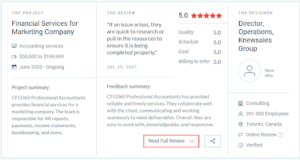What is depreciation?
Depreciation on assets is a technique for allocating the cost of an asset over its useful life. It allows businesses to spread out the cost of assets such as equipment, vehicles and buildings over periods that are significantly longer than their actual lifespans. This helps depreciated assets become more affordable. It enables companies to smooth cash flow when they buy new items or replace older ones.
What is an example of depreciation?
If you purchase a truck with a cost of $100 000 and the expected usage of the truck is 5 years, the business might depreciate the asset under depreciation expense as $20 000 every year for a period of 5 years.
How to calculate depreciation?
There are various methods to perform a depreciation calculation :
1. Straight line depreciation formula: Depreciation Expense = (Cost – Salvage value) / Useful life
2. Double declining balance: Periodic Depreciation Expense = Beginning book value x Rate of depreciation
3. Units of production: Depreciation Expense = (Number of units produced / Life in number of units) x (Cost – Salvage value)
4. Sum of years digits: Depreciation Expense = (Remaining life / Sum of the years digits) x (Cost – Salvage value)
Is Depreciation a fixed cost?
Depreciation is a fixed cost. Because it recurs in the same amount per period throughout the useful life of an asset. Depreciation is not a variable cost, as it does not vary with activity volume.
What are the disadvantages of depreciation?
Most bits of office hardware, apparatus, and different things obtained at a given time do not perform the very same every year. With an increase in the assets age they become less proficient. Fix costs for the most part increment after some time. Straight-line depreciation does not represent the loss of effectiveness or the expansion in fix costs throughout the years. In this way, it is not as appropriate for expensive assets, for example, plant and gear.
What is a depreciation policy?
A depreciation policy is a company’s plan of systematically and evenly allocating the cost of assets over their useful life. The most common types of assets are buildings, vehicles, furniture, computers and other electronic equipment. The depreciation policy is your guideline when calculating depreciation.
Is it better to depreciate or expense?
For people who want to take the most advantageous approach, it is better to expense a capital cost rather than depreciate it. This is because an expense deduction reduces taxable income while depreciation deductions only reduce the net book value of an asset on your balance sheet.
When you depreciate something, you are reducing its value in order to spread out the tax liability over time. It avoids paying taxes all at once on a high dollar amount. It’s important to note that when you choose this option, you will have trouble as to how much depreciation is for each year. We won’t know which assets should be depreciated first since there might not be enough left for later years.
It is important to understand the tax consequences of depreciation when you purchase a new asset. Contact us for more information on how this will affect your taxes.



